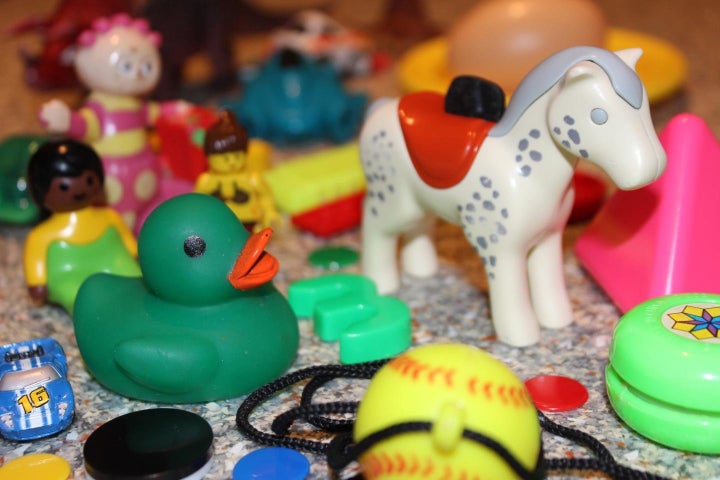Plastic in older toys could pose a risk to children’s health, according to hew research.
Old plastic toys, which are likely to have been passed down through generations between families, could contain high concentrations of toxic chemicals.
Scientists from the University of Plymouth analysed 200 used plastic toys - cars, trains, construction products and figures - found in homes, nurseries and charity shops across the South West of England.
They discovered high concentrations of “hazardous elements” (antimony, barium, bromine, cadmium, chromium, lead and selenium), which are toxic to children at low levels over an extended period of time.
“This is the first systematic investigation of hazardous elements in secondhand plastic toys in the UK,” said lead author Dr Andrew Turner.
“Secondhand toys are an attractive option to families because they can be inherited directly from friends or relatives or obtained cheaply and readily from charity stores, flea markets and the internet.”

Further tests of the toys showed that under simulated stomach conditions (basically artificially replicating a stomach), several toys released quantities of the chemicals bromine, cadmium or lead that exceeded limits set by the European Council’s Toy Safety Directive.
The toys with the most chemicals were typically yellow, red or black. Turner explained to HuffPost UK that this is because toy manufacturers use chemicals containing cadmium and lead to make them these colours.
Turner said while the Toy Safety Directive applies to new products there is no regulation covering the recycling or re-sale of older toys.
“With the introduction and refinement of the Toy Safety Directive, the plastics industry has had to take steps to eliminate hazardous elements from new toys,” he said. “However, consumers should be made more aware of the potential risks associated with small, mouthable and brightly coloured old plastic toys or components.”
So should parents worry about how dangerous toys they have are for their kids?
Speaking to HuffPost UK, Dr Turner said it’s difficult to say how long it takes for a toy to accrue these chemicals.
“Toys made within the last decade are reasonably safe,” he said. “It’s the older ones that seem to be passed down through generations, but it is difficult to give a time scale.
“Parents should check the condition of the toy and avoid children pulling them in their mouth - which I know is hard to ensure. They should also avoid brightly-coloured red and yellow objects from the past.
“Cleaning doesn’t do any good as the chemicals are within the plastic. These toys are generally safe to handle by hand, it’s just when they start chewing them.
“If you want to be on the safe side, avoid using them. I guess the real danger is when they swallow them.”